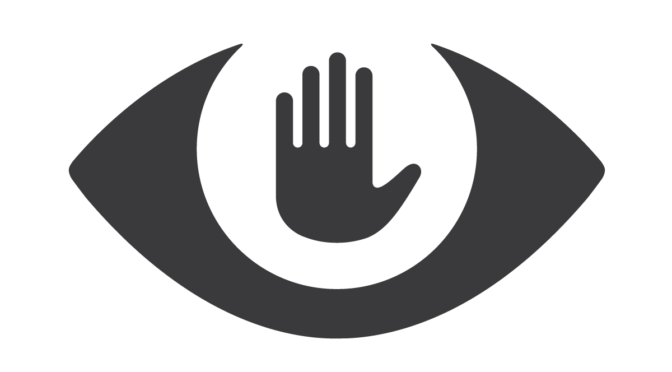By Tracy Roosenberg, Originally published in Berkeleyside
The list of spying gadgets available to American law enforcement agencies in the second decade of the 21st century is vast. Drones, stingrays, iris scanners, license plate readers, FLIRS. I could keep on naming them for a long time. George Orwell’s 1984 is less of an abstract futuristic warning and more of an eerily prescient fortune cookie.
Despite their terrifying and intrusive aspects, not all uses of surveillance technology are bad. If you are lost in rough terrain, a drone may find you faster than anything else possibly could. The infrared cameras on FLIR units can find hot spots remaining from fires and explosions and prevent them from re-igniting with sometimes tragic results.
But differentiating benign and appropriate uses of powerful equipment from those that are invasive and downright unconstitutional has lagged way behind their ubiquitous use. Agency after agency, from the vast and unaccountable NSA to the NYPD and the teensy Calexico Police Department, has been exposed using spying equipment in unacceptable ways. Lack of transparency means human rights violations often don’t come to light until long afterward – or at all.
With the never-ending war on terror feeding a vast Department of Homeland Security apparatus that is now in the hands of an unstable president, the consequences of errant surveillance use can be dire for First Amendment-protected targets like journalists, mosques, DAPL/anti-pipeline activists, cannabis clubs, immigrants, and “black identity extremists,” Bulk collection devices like the license plate readers in use in many cities around the Bay Area scoop up records of our comings and goings indiscriminately and without our knowledge. Alameda County health officials just removed a previously unknown license plate reader from the parking lot of Highland Hospital’s emergency room after a public records act request revealed the machine was sending tens of thousands of license plate scans to the Homeland Security fusion center, as if seeking medical care is a crime to be reported to the IRS, the FBI, and ICE.
The collection of surveillance data and the sharing of it between local, state and federal law enforcement agencies is growing rapidly – and is subject to less oversight and regulation than your average taco truck.
But it doesn’t have to be this way. Progressive communities like Berkeley can lead the way in determining what is and isn’t okay in their towns. After local residents rebelled in Santa Clara County at the planned purchase of a stingray device by their sheriff, and neighboring Oakland rose up to stop a Domain Awareness Center spying network, Californians began to implement transparency and accountability laws.
In the past 16 months, Santa Clara County has passed a comprehensive surveillance transparency and oversight ordinance, Oakland has created the most robust use policy for stingray devices in the nation, and statewide surveillance transparency reform (SB-21) came within two votes of Governor Brown’s signature, passing through six state policy committees and the entire California State Senate.
The city of Berkeley came out strongly in favor of SB-21 and implementing surveillance transparency in every city and county throughout California. The members of the current Berkeley City Council voted unanimously to endorse statewide passage in May of 2017.
Almost a year earlier, in July of 2016, the Berkeley City Council asked the Police Review Commission and Peace and Justice Commission to develop a surveillance transparency ordinance for Berkeley but customized for the city’s specific needs.
For a year and a half, the city has worked on this in consultation with regional privacy experts, culminating in the unanimous approval by all the members of both citizen commissions of the Surveillance Equipment Use and Community Safety Ordinance. It comes before the City Council on December 5 for a first reading.
The Surveillance Equipment Use and Community Safety Ordinance has a simple premise. The acquisition and use of surveillance and spying equipment and technology need to be transparent to the city’s residents and overseen by the elected governing board of the city. Existing equipment and new types that may be acquired in the future will be subject to use policies that define acceptable uses and examine privacy and civil rights impacts on the front end. Actual use is reviewed on the back end to bring to light potential problems, before abuse happens and litigation ensues, and to assess the cost to benefit ratio – i.e. is the equipment doing what we intended, are we getting our money’s worth, and is there value to public safety and the residents of Berkeley in continuing to use it?
Secret surveillance breeds paranoia in the community and invites waste and misuse. As with all of government, sunlight is the best disinfectant. Berkeley’s progressive City Council knows this. In June, it voted, again unanimously, to require that the passage of a surveillance transparency ordinance be concurrent with Berkeley’s police department’s acquisition of body cameras.
After three unanimous council votes of approval in concept, two unanimous citizens commission votes, and a yearlong dedicated subcommittee, it’s time to act and not to delay.
Berkeley, what are you waiting for?


2 thoughts on “The Time For Surveillance Transparency Is Now”
Comments are closed.